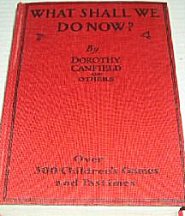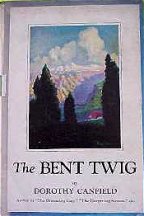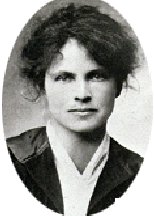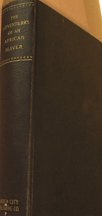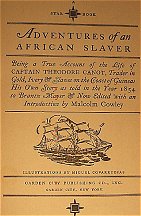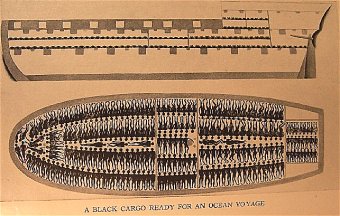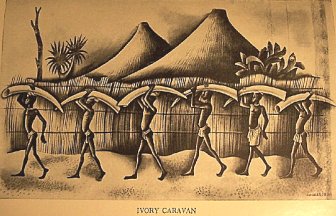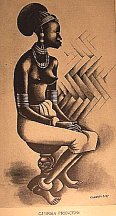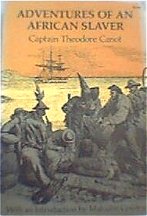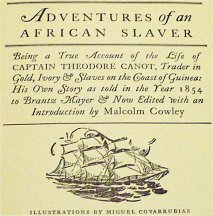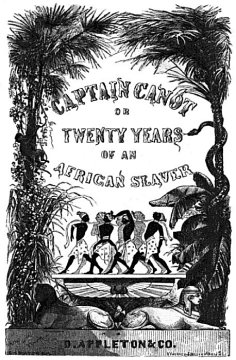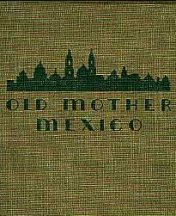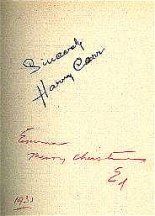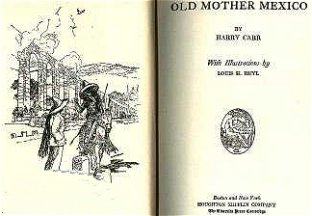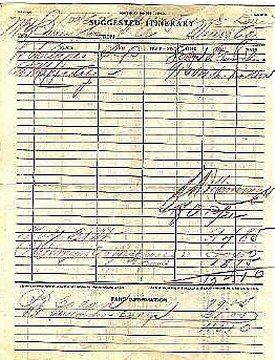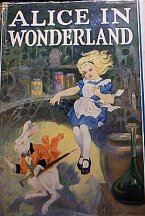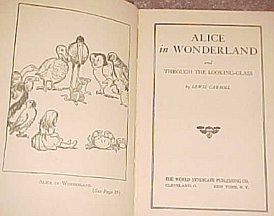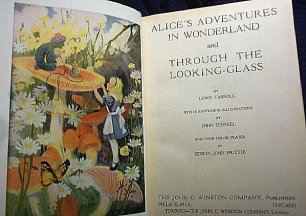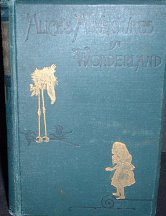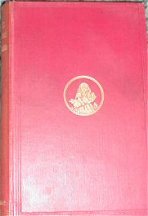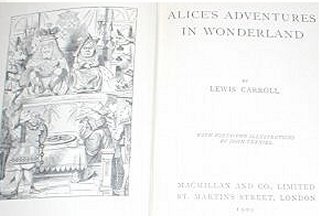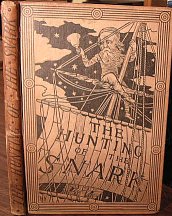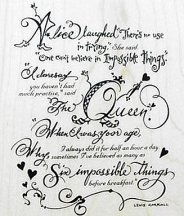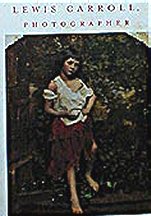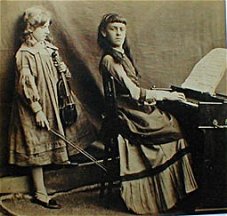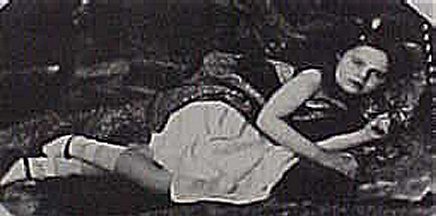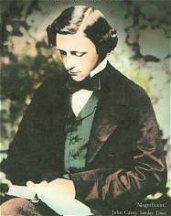CABLE,
George W. The Cavalier
CACKMAN,
George ~ Norton's American Indian Vol 1&2 15$ Gilt design, 1926 GRANT
CAINE,
Hall The Eternal City
CALHOUN,
Frances Boyd Miss Minerva and William Green Hill
CAMERON,
Commander V. Lovett ~ Savage Africa - London/New York 1903 T Nelson
and Sons
CANFIELD,
Dorothy Her Son's Wife
CANFIELD,
Dorothy The Brimming Cup
CANOT, Captain
Theodore: Adventures of an African
Slaver
CAPES, W. W. (William
Wolfe): The early empire, from the assassination of Julius
Csar to that of Domitian
CARLSON: Swedish Grammar
CARLTON,
William Carlton ~ Willie Reilly and his Dear Collie Vaughn Ins: Charles
Burroughs, Ellison Iowa DEC 15 1894.
CARMANY: Among the Apaches
CARR, Harry: Old Mother
Mexico
CARROLL,
Lewis ~ Alice in Wonderland 1908
CARROLL,
Lewis Alice's Adventures in Wonderland and Through the Looking Glass
CASE: Thirty Years with
the Mex
CASEY, Robert J.: Easter
Island: Home of the Scronful Gods
CASEY, Robert J.: Four
Faces of Siva
CASTLE,
Agnes & Egerton ~ Rose of the World
CASTLE,
Egerton Young April
CATHER,
Willa The Professor House
CATHERWOOD,
Mary Hartwell Lazarre
CATLIN, George: North
American Indians (2 voluems)
CATLIN,
George. North American Indians; Being Lettera and Notes on Their Manners,
Customs, and Conditions, Written During Eight Years Travel Amongst The
Wildest Tribes of Indians in North America, 1832-1839. 2 volumes. Edinburgh:
John Grant, 1926.
CHAILLU: In African Forests
and Jungle (See Paul Belloni Du Chaillu in
D3)
CHALFANT,
W. A.: Death Valley (1933...(no publisher listed)
CHALFANT, W. A.: Story
of Inyo
CHAMBERS,
Robert W. The Crimson Tide
CHAMBERS,
Robert W. The Dark Star
CHAMBERS,
Robert
W. The Fighting Chance
CHAMBERS: The Fighting
Chance
CHAMBERS,
Robert W. The Fighting Chance. New York: D. Appleton and Company, 1906.
Flyleaf inscription: “To Dear Old Husband from his Dear Old Wife, September
first nineteen hundred and six. Ed Burroughs, 194 Park Avenue, Chicago.”
CHAMBERS,
Robert W. In Search
CHAMBERS,
Robert W. The Slayer of Souls
CHAMBERS,
Robert W. Who Goes There
CHAMBERS: Who Goes There
CHILVERS, Hedley A.:
Seven Wonders of South Africa
CHURCHILL,
Winston Richard Carvell
CHURCHILL,
Winston The Crisis
CHURCHILL: The Crisis
CHURCHILL,
Winston The Crossing
CLAUDY,
C. H. Tell Me Why
COATES
Children's Book of Poetry
COBB,
Irving S. Goin' on Fourteen
COBB,
Irving S. Speaking of Operations
COBURN,
F.D. Swine in America; A Text-book for the Breeder, Feeder & Student.
New York: Orange Judd Company, 1916.
COBURN: Swine in America
COHEN,
Octavus Roy Polished Ebony
COHEN: Polished Ivory
COLUM,
Padraic The Island of the Might
COLUMBUS: Columbus Series
COLUMBIAN
EXPOSITION: Official Views of the Columbian Exposition - Dept of Photo.
1893
COLVER,
Alice Ross ~ Babs at College
COLVER,
Alice Ross ~ Babs at Home
COMPOSITION: New Handbook
of Composition
COMSTOCK,
Harriet T. Joline
COOK,
John: Cook's Voyages (1902); DAVIS, George Wesley: Alone: A Beautiful Land
of Dreams (Los Angeles, Times Mirror, 1922);
COOKE,
Marjorie Benton Cinderella Jane 1917 A.L. Burt
COOKE,
Marjorie Benton Cinderella Jane
CORBETT,
Jim ~ Man-eaters of Kumaon Oxford 1946 1st American Edition
CORCORAN,
Brewer The Princess Naida
CORNELL,
Hughes Born Rich
COZZENS:
Samuel Woodworth. The Marvelous Country: Three Years in Arizona and New
Mexico, the Apache's Home ~ 1873 Shepard and Gill, Boston.
(pp. 409-413).
CRANE,
Edward A.: The Second French Empire (1905)
CRANE,
Leo: Indians of the Enchanted Desert (Boston, Little/Brown, 1925)
CRAWFORD,
F. Marion Don Orsino
CROFT,
Freeman Wills Pit Prop Syndicate
CRANE: Indians of the
Enchanted Desert
CRAWFORD: Dan Orsino
CREMONY, John Carey ~
Life Among the Apaches
CROSS,
Ruth The Golden Cocoon
CRUMMER,
Wilbur. F. (45th Regiment, Illinois Volunteer). With Grant at Fort Donelson,
Shilo and Vicksburg; And an Appreciation of General U.S. Grant. Oak Park,
Il: E.C. Crummer and Company, 1915. Flyleaf inscription: “To Edgar Rice
Burroughs, compliments of the author Wilbur R. Crummer, Oak Park, Ils,
June 20, 1917.”
CUMMINGS.
Edward Marmaduke of Tennessee
Curious
Questions
CURTIS,
Alice Turner ~ Grandpa's Little Girls
CURWOOD,
James A Gentleman of Courage
CURWOOD,
James Back to God's Country
CURWOOD,
James God's Country and the Women
CURWOOD,
James Isobel
CURWOOD,
James The Alaskan
CURWOOD,
James The Ancient Highway
CURWOOD,
James The Black Hunter
CURWOOD,
James The Courage of Marge O'Doone
CURWOOD,
James The Danger Trail
CURWOOD,
James The Flaming Forest
CURWOOD,
James The Golden Snare
CURWOOD,
James The Grizzly King
CURWOOD,
James The Hunted Woman
CURWOOD,
James The River's End
CURWOOD,
James The Valley of Silent Men
CUSTER,
My Life on the Plains - by Custer - 1881 Sheldon and Company
|

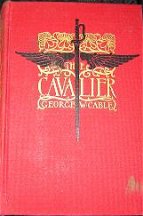
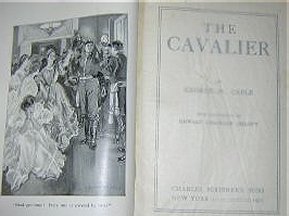
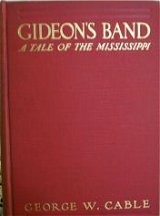
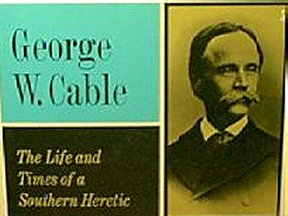
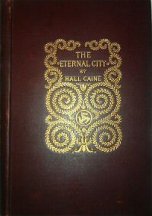
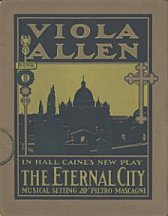
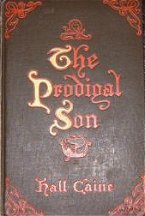
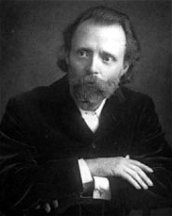 Thomas
Henry Hall Caine was born on 14th May 1853 at Runcorn in Cheshire,
where his parents were residing temporarily. His father John Caine, a Manxman,
had gone to Merseyside looking for work. Hall was his mother's name, and
she hailed from Cumberland. During his childhood Thomas Henry was occasionally
sent to stay with his uncle who lived on the Isle of Man in a thatched
cottage at Ballaugh. He would help out with his uncle's butcher-farmer
business and ride into the market in Douglas on a small horse and cart.
His grandmother lived at the cottage and it was she who told him wondrous
tales of Manx fairies and witches and all about the folklore of the island
which would provide material for him to draw on in later life for his novels.
Grandmother Caine taught him the rudiments of the Manx language,and it
was she who gave him the nickname Hommy Veg which in Manx meant little
Tommy. Some of his time in the Isle of Man was spent helping another of
his uncles who was a schoolmaster at Kirk Maughold, near Ramsey. When young
Tommy returned to Liverpool he had sown the seeds of a life-long attachment
to the Island, and this bond grew ever stronger. Thomas became an apprentice
architect in Liverpool, whilst at the same time writing articles for trade
journals and contributions to newspapers and magazines. He gave lectures
around Merseyside to various societies and the subject of one of these,
Dante Gabriel Rossetti, invited him to London. Caine lived with the old
man right up until his death and the two became great friends. Under his
influence Caine took up writing of a more literary kind, contributing to
The Academy and The Atheneum as well as other periodicals. During his time
in London Caine shared rooms with an academic friend Eric Robertson, and
in the evenings they had meals sent over from a nearby café. The
food was delivered by two of the young girls who worked there -- one of
them was called Mary Chandler. Some months later she arrived unexpectedly
with her step-father who claimed she had been "ruined". She was just 13
years old, Hall Caine was 29. Legally, there was nothing to stop them from
marrying, the age of consent at that time being 13, but instead Caine agreed
to keep her and educate her. They both kept quiet, never admitting that
they were not married, and when in company Caine would tell people that
she was 17. They went to live in Sevenoaks in Kent where Mary devoted all
her time to her education and to becoming a fit wife for an intellectual
author. A year later they moved to Worsley Road in Hampstead, and not long
afterwards Mary became pregnant. Her baby was born in 1884 and christened
Ralph. Still Caine made no attempt to legalise the situation -- he did
not register the birth for a month. When he did, he committed perjury by
giving his wife's name as "Mary Alice Caine, formerly Chandler." He was
however a loving, caring father in every other respect, and he loved both
wife and child dearly. In 1886 Caine took Mary to Edinburgh, staying
at 83 Princes Street and arranged a quiet wedding. No one except the Registrar
and two local witnesses knew anything about it. Caine gave his age correctly
as 33, but Mary's was given as 23, but she was in fact only 17. Caine's
marriage marked the start of the most successful stage of his career. His
other son, Derwent was born in 1891. Hall Caine's first novel, The
Shadow of a Crime, published in 1885, and his second, A Son of Hagar, published
one year later, were both set in Cumberland. Rossetti read both of them
and advised Caine to change tack and try his hand at a Manx story. He could,
said Rossetti, become "The Bard of Manxland." Heeding this advice Caine
wrote The Deemster (1887) incorporating aspects of life on the Isle of
Man, and it was this work that brought him to prominence as a novelist.
His next books, The Bondman, and The Scapegoat (1890), and Cap'n Davey's
Honeymoon (1893) all further enhanced his rapidly growing reputation. In
1894 The Manxman sold nearly 400,000 copies and was translated into many
foreign languages, earning Caine a tidy sum of money, but even this was
eclipsed by sales of his next novel The Christian (1897) which reached
650,000 -- a staggering number for that time. And so it continued -- sales
of The Eternal City (1901) a novel set in Rome sold over one million worldwide.
Of all these titles The Scapegoat is authoritatively described as his highest
achievement as a story teller. It can be said that Hall Caine's quest to
become The Bard of Manxland was at the same time putting the Isle of Man
on the map. It was around this time that it became a favourite holiday
resort. The Isle of Man Steam Packet Company had purchased brand new steamers
to bring many thousands of tourists to Douglas, the island's capital, from
Liverpool. Local businessmen speculated on providing new hotels and boarding
houses, and new entertainment buildings sprung up to meet the new demand.
More novels followed and many were best sellers of the time. Hall Caine
left his home in England and moved to the Isle of Man where he was not
slow to take full advantage of his fame and popularity, being interviewed
and photographed for numerous magazines and periodicals. One magazine
of the time described Hall Caine as "Slightly built, rather under what
is called medium height. Hair, moustache and pointed beard are of bright
brown, and with a lofty forehead and keen humorous eyes, he would give
you the impression of being a man of great ability even if his name and
real personality were unknown to you." Many people remarked that in appearance
he was not unlike William Shakespeare. Indeed, knowing he was an astute
egotist, many commentators reckoned he deliberately cultivated the likeness.
In October 1901 he stood as a candidate in the Manx elections. He was successful
and became a member of the House of Keys (The Manx Parliament) for Ramsey.
Some years later he moved back to live in England where it was easier to
supervise his many literary projects like the production of his plays,
and he also visited the United States to lobby the government there
about the setting up of copyright legislation. During the Great War (1914-1918)
he wrote many patriotic articles, and edited King Albert's Book, the proceeds
of which went to help Belgian refugees. He cancelled many literary contracts
in America to devote all his time and energy to the British war effort.
He was made a K.B.E in 1918 on the recommendation of the Prime Minister
Lloyd George, and four years later he was made a Companion of Honour in
recognition of his distinction in literature. He was received by Kings,
Presidents, Princes and the Pope. He was on speaking terms with Prime Ministers,
Ambassadors, leading politicians, eminent actors, and he had now reached
the summit of international fame. The last of Hall Caine's full length
novels was published in 1921, when he gave up writing to concentrate on
his life's work -- a Life of Christ, which he had been researching for
many years during several visits to Palestine and Transjordania. He died
before this work was completed and it was published posthumously by his
two sons in 1938. Hall Caine died at his home, Greeba Castle on the Isle
of Man on 31st August 1931, in his 79th year. For twenty years between
1893 and 1930 he had held an unquestioned place as one of the best-read
of British authors.
Thomas
Henry Hall Caine was born on 14th May 1853 at Runcorn in Cheshire,
where his parents were residing temporarily. His father John Caine, a Manxman,
had gone to Merseyside looking for work. Hall was his mother's name, and
she hailed from Cumberland. During his childhood Thomas Henry was occasionally
sent to stay with his uncle who lived on the Isle of Man in a thatched
cottage at Ballaugh. He would help out with his uncle's butcher-farmer
business and ride into the market in Douglas on a small horse and cart.
His grandmother lived at the cottage and it was she who told him wondrous
tales of Manx fairies and witches and all about the folklore of the island
which would provide material for him to draw on in later life for his novels.
Grandmother Caine taught him the rudiments of the Manx language,and it
was she who gave him the nickname Hommy Veg which in Manx meant little
Tommy. Some of his time in the Isle of Man was spent helping another of
his uncles who was a schoolmaster at Kirk Maughold, near Ramsey. When young
Tommy returned to Liverpool he had sown the seeds of a life-long attachment
to the Island, and this bond grew ever stronger. Thomas became an apprentice
architect in Liverpool, whilst at the same time writing articles for trade
journals and contributions to newspapers and magazines. He gave lectures
around Merseyside to various societies and the subject of one of these,
Dante Gabriel Rossetti, invited him to London. Caine lived with the old
man right up until his death and the two became great friends. Under his
influence Caine took up writing of a more literary kind, contributing to
The Academy and The Atheneum as well as other periodicals. During his time
in London Caine shared rooms with an academic friend Eric Robertson, and
in the evenings they had meals sent over from a nearby café. The
food was delivered by two of the young girls who worked there -- one of
them was called Mary Chandler. Some months later she arrived unexpectedly
with her step-father who claimed she had been "ruined". She was just 13
years old, Hall Caine was 29. Legally, there was nothing to stop them from
marrying, the age of consent at that time being 13, but instead Caine agreed
to keep her and educate her. They both kept quiet, never admitting that
they were not married, and when in company Caine would tell people that
she was 17. They went to live in Sevenoaks in Kent where Mary devoted all
her time to her education and to becoming a fit wife for an intellectual
author. A year later they moved to Worsley Road in Hampstead, and not long
afterwards Mary became pregnant. Her baby was born in 1884 and christened
Ralph. Still Caine made no attempt to legalise the situation -- he did
not register the birth for a month. When he did, he committed perjury by
giving his wife's name as "Mary Alice Caine, formerly Chandler." He was
however a loving, caring father in every other respect, and he loved both
wife and child dearly. In 1886 Caine took Mary to Edinburgh, staying
at 83 Princes Street and arranged a quiet wedding. No one except the Registrar
and two local witnesses knew anything about it. Caine gave his age correctly
as 33, but Mary's was given as 23, but she was in fact only 17. Caine's
marriage marked the start of the most successful stage of his career. His
other son, Derwent was born in 1891. Hall Caine's first novel, The
Shadow of a Crime, published in 1885, and his second, A Son of Hagar, published
one year later, were both set in Cumberland. Rossetti read both of them
and advised Caine to change tack and try his hand at a Manx story. He could,
said Rossetti, become "The Bard of Manxland." Heeding this advice Caine
wrote The Deemster (1887) incorporating aspects of life on the Isle of
Man, and it was this work that brought him to prominence as a novelist.
His next books, The Bondman, and The Scapegoat (1890), and Cap'n Davey's
Honeymoon (1893) all further enhanced his rapidly growing reputation. In
1894 The Manxman sold nearly 400,000 copies and was translated into many
foreign languages, earning Caine a tidy sum of money, but even this was
eclipsed by sales of his next novel The Christian (1897) which reached
650,000 -- a staggering number for that time. And so it continued -- sales
of The Eternal City (1901) a novel set in Rome sold over one million worldwide.
Of all these titles The Scapegoat is authoritatively described as his highest
achievement as a story teller. It can be said that Hall Caine's quest to
become The Bard of Manxland was at the same time putting the Isle of Man
on the map. It was around this time that it became a favourite holiday
resort. The Isle of Man Steam Packet Company had purchased brand new steamers
to bring many thousands of tourists to Douglas, the island's capital, from
Liverpool. Local businessmen speculated on providing new hotels and boarding
houses, and new entertainment buildings sprung up to meet the new demand.
More novels followed and many were best sellers of the time. Hall Caine
left his home in England and moved to the Isle of Man where he was not
slow to take full advantage of his fame and popularity, being interviewed
and photographed for numerous magazines and periodicals. One magazine
of the time described Hall Caine as "Slightly built, rather under what
is called medium height. Hair, moustache and pointed beard are of bright
brown, and with a lofty forehead and keen humorous eyes, he would give
you the impression of being a man of great ability even if his name and
real personality were unknown to you." Many people remarked that in appearance
he was not unlike William Shakespeare. Indeed, knowing he was an astute
egotist, many commentators reckoned he deliberately cultivated the likeness.
In October 1901 he stood as a candidate in the Manx elections. He was successful
and became a member of the House of Keys (The Manx Parliament) for Ramsey.
Some years later he moved back to live in England where it was easier to
supervise his many literary projects like the production of his plays,
and he also visited the United States to lobby the government there
about the setting up of copyright legislation. During the Great War (1914-1918)
he wrote many patriotic articles, and edited King Albert's Book, the proceeds
of which went to help Belgian refugees. He cancelled many literary contracts
in America to devote all his time and energy to the British war effort.
He was made a K.B.E in 1918 on the recommendation of the Prime Minister
Lloyd George, and four years later he was made a Companion of Honour in
recognition of his distinction in literature. He was received by Kings,
Presidents, Princes and the Pope. He was on speaking terms with Prime Ministers,
Ambassadors, leading politicians, eminent actors, and he had now reached
the summit of international fame. The last of Hall Caine's full length
novels was published in 1921, when he gave up writing to concentrate on
his life's work -- a Life of Christ, which he had been researching for
many years during several visits to Palestine and Transjordania. He died
before this work was completed and it was published posthumously by his
two sons in 1938. Hall Caine died at his home, Greeba Castle on the Isle
of Man on 31st August 1931, in his 79th year. For twenty years between
1893 and 1930 he had held an unquestioned place as one of the best-read
of British authors.
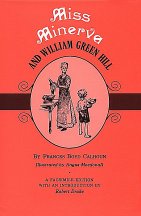
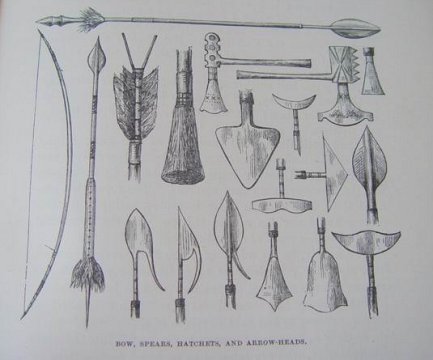
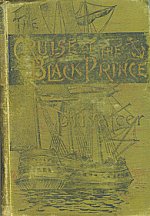 The Cruise
of the Black Prince: Chicago & NY: Belford, Clarke & Co. 1886
The Cruise
of the Black Prince: Chicago & NY: Belford, Clarke & Co. 1886
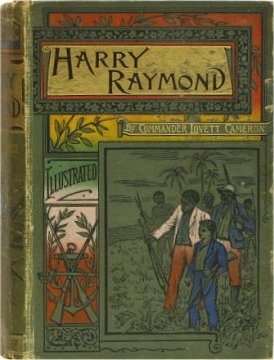 Harry Raymond ~
London: Frederick Warne 1894 ~ Illustrated 320pp
Harry Raymond ~
London: Frederick Warne 1894 ~ Illustrated 320pp
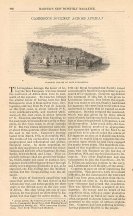
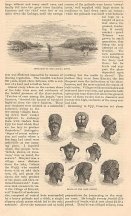
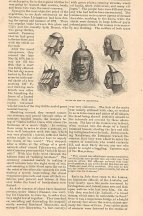
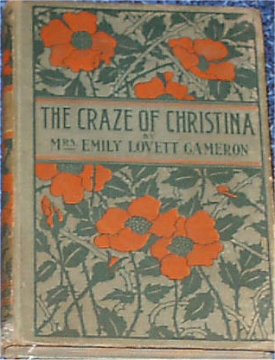 The Craze of Christina
by Mrs. Emily Lovett Cameron ~ 1899 NY: Street & Smith
The Craze of Christina
by Mrs. Emily Lovett Cameron ~ 1899 NY: Street & Smith
